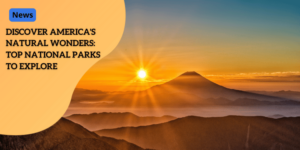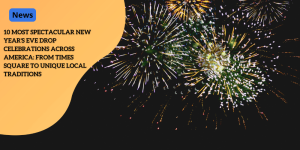Spectacular Aurora Borealis Forecast: Where and When to Watch the Northern Lights April 15-16

Anúncios
Introduction to the Northern Lights Spectacle
This April 15-16, residents in parts of the United States have a rare opportunity to witness the dazzling display of the aurora borealis, also known as the northern lights.
The chance to see this celestial phenomenon is due to a series of solar eruptions over the preceding weekend, which have created ideal viewing conditions.
Anúncios
Canadians and Alaskans are usually the ones best positioned to enjoy this natural spectacle.
However, those in certain northern U.S. states may also get a glimpse if the conditions remain favorable.
Anúncios
States like North Dakota, Montana, Minnesota, and Washington are among those with potential visibility.
These solar eruptions send charged particles racing towards Earth, interacting with the planet’s atmosphere and generating the colorful light ribbons that mesmerize observers in the night sky.
It’s a wonderful reminder of the dynamic, ever-changing nature of our universe.
Understanding the Aurora Borealis
The aurora borealis, commonly known as the northern lights, is a breathtaking natural light display in the Earth’s upper atmosphere.
This spectacular phenomenon occurs when charged particles from the sun collide with atoms in our atmosphere, resulting in luminous ribbons that light up the night sky.
These charged particles, primarily electrons, are directed towards the Earth’s magnetic poles by the planet’s magnetic field, which concentrates the auroras around the North and South Poles (NASA).
What Causes the Northern Lights?
The sun constantly releases a stream of charged particles known as solar wind.
While the Earth’s magnetic field usually deflects these particles, a strong solar wind can penetrate it and direct charged particles towards the polar regions.
When these high-energy particles collide with oxygen and nitrogen atoms in the upper atmosphere, they transfer energy, which causes these atoms to emit light.
This process creates the vibrant greens, pinks, reds, and purples characteristic of the aurora borealis.
The Magnetic Field’s Role
The Earth’s magnetic field is essential for the formation of the aurora borealis.
This invisible shield directs charged particles toward the poles.
Without it, the solar wind could strip away our atmosphere, making our planet vulnerable and lifeless.
The strength of the magnetic field varies with latitude, which is why the northern lights are most vividly seen near the polar regions.
Visual Effects in the Night Sky
The visual spectacle of the aurora borealis is truly one of nature’s most mesmerizing phenomena.
The light appears in various forms—from scattered patches or streamers to arcs and rippling curtains of color.
These movements are influenced by the dynamics of Earth’s magnetosphere and the solar wind, resulting in a constantly changing and unpredictable light show.
Remember, to fully appreciate this awe-inspiring event, it’s essential to find a viewing spot away from light pollution and to be patient, as the intensity and visibility of the aurora can fluctuate.
Now that you understand what causes the aurora borealis, the next step is to know where you might catch a glimpse of this stunning natural event.
Where to Watch in the United States
For U.S. residents hoping to catch a glimpse of the Northern Lights on April 15-16, the best chances are in the northernmost regions of 16 states.
These include North Dakota, Montana, Minnesota, and Washington.
Viewing opportunities are enhanced as you move further north in these states, away from urban light pollution.
Here are some of the states with potential visibility:
- 🌌North Dakota
- 🌌Montana
- 🌌Minnesota
- 🌌Washington
- 🌌Michigan
- 🌌Wisconsin
- 🌌Maine
- 🌌Oregon
- 🌌Idaho
- 🌌Wyoming
- 🌌Iowa
- 🌌New York
- 🌌Nebraska
- 🌌Illinois
- 🌌Vermont
- 🌌New Hampshire
Residents in Alaskan and Canadian regions are best positioned for the spectacle, but the geomagnetic storm could push auroral visibility further south.
If the storm intensifies, states even beyond this list might witness the aurora borealis.
To maximize your chances, find a dark, clear spot away from city lights.
Watching during the darkest hours of the night, typically after midnight, provides the best opportunity for experiencing this natural phenomenon.
Stau tuned to ensure optimal viewing conditions, avoiding cloud-covered areas for a clearer view.
As we move forward, understanding the optimal conditions and timings for viewing will be crucial.
Optimal Viewing Times and Conditions
Catching a glimpse of the aurora borealis requires perfect timing and conditions.
The magic usually happens during the darkest hours of the night and early morning.
Ideally, after midnight offers the best chance to see the vibrant light displays.
Seek Darkness Away from City Lights
To improve your viewing chances, head to areas away from city lights and light pollution.
Urban areas can wash out the spectacle with their artificial glow, so seek out open, remote spaces or dark sky parks where the natural beauty can shine unobstructed.

Stay Connected for Updates
NASA satellites are crucial in providing real-time updates on the aurora borealis’ visibility.
These satellites track solar activity and geomagnetic storms that affect when and where you can see the Northern Lights.
Following regular updates from NASA and trusted weather services can help you plan your adventure for the best possible experience.
Ready to witness this celestial phenomenon? Remember to bundle up, stay patient, and keep your eyes on the skies.
Weather Impact on Visibility
Favorable Conditions in the Midwest and Northern Plains
Residents in the Midwest and northern Plains can look forward to some of the best viewing conditions for the Northern Lights on Tuesday night.
Clear skies are expected to provide an unobstructed view of the aurora borealis, making these areas prime spots for witnessing the celestial light show.
Challenges in the Northeast and Eastern Great Lakes
Unfortunately, the weather looks less promising for those in the Northeast and eastern Great Lakes regions.
These areas are forecasted to experience wintry weather, including clouds, rain, cold temperatures, and even snow, which could significantly hinder visibility.
There may be some improvement in cloud cover by Wednesday night, providing a small window for potential viewing.
Improving Conditions in the Pacific Northwest and Rocky Mountains
The Pacific Northwest and the Rocky Mountains will also face some challenges on Tuesday night due to cloudy weather.
However, conditions are expected to improve by Wednesday night, particularly in Washington and Oregon, offering residents a better chance to catch a glimpse of the Northern Lights.
Next, we will discuss tips and additional information for photographing this beautiful natural phenomenon.
Photography Tips and Additional Viewing Information
Capture the Lights with Long Exposure
Photographers can find capturing the magic of the Northern Lights on camera to be a thrilling challenge.
Even when your eyes can’t see the aurora’s full splendor, long-exposure photography can bring out its hidden beauty.
Here are some tips for getting the best results:
Use a Tripod: A tripod is essential for keeping your camera steady during long exposures, helping to avoid blurry images.
| Setting | Recommended Value | Purpose | Tips |
|---|---|---|---|
| Focus | Manual (∞ infinity) | Ensure sharp stars and aurora | • Use live view zoom to verify • Adjust slightly if needed |
| Aperture | f/2.8 or wider | Maximize light capture | • Use fastest lens available • Stop down slightly if too soft |
| ISO | 800-3200 | Balance sensitivity and noise | • Start at 1600 and adjust • Newer cameras handle high ISO better |
| Shutter Speed | 10-30 seconds | Capture movement and color | • Adjust for aurora activity • Longer for faint displays |
Stay Updated on Viewing Times
Staying informed on the best times to view the Northern Lights is crucial for a successful outing.
Regular updates on solar activity, geomagnetic storms, and weather conditions are available through:
- 🌌The NASA Space Weather Prediction Center
- 🌌Local weather services
These resources can provide up-to-date forecasts and alerts, maximizing your chances of seeing this spectacular display.
Plan According to Weather Conditions
Weather plays a significant role in aurora visibility.
Ensure you check local weather conditions before heading out:
- 🌌Clear Skies: Aim for clear nights with minimal clouds for the best viewing opportunities.
- 🌌Cold Weather Gear: Make sure you’re prepared for cold temperatures, especially if you’re heading far north. Dress in layers to stay warm while you wait for the lights to appear.
By following these tips and planning ahead, you’ll increase your chances of witnessing and capturing the enchanting Northern Lights..







